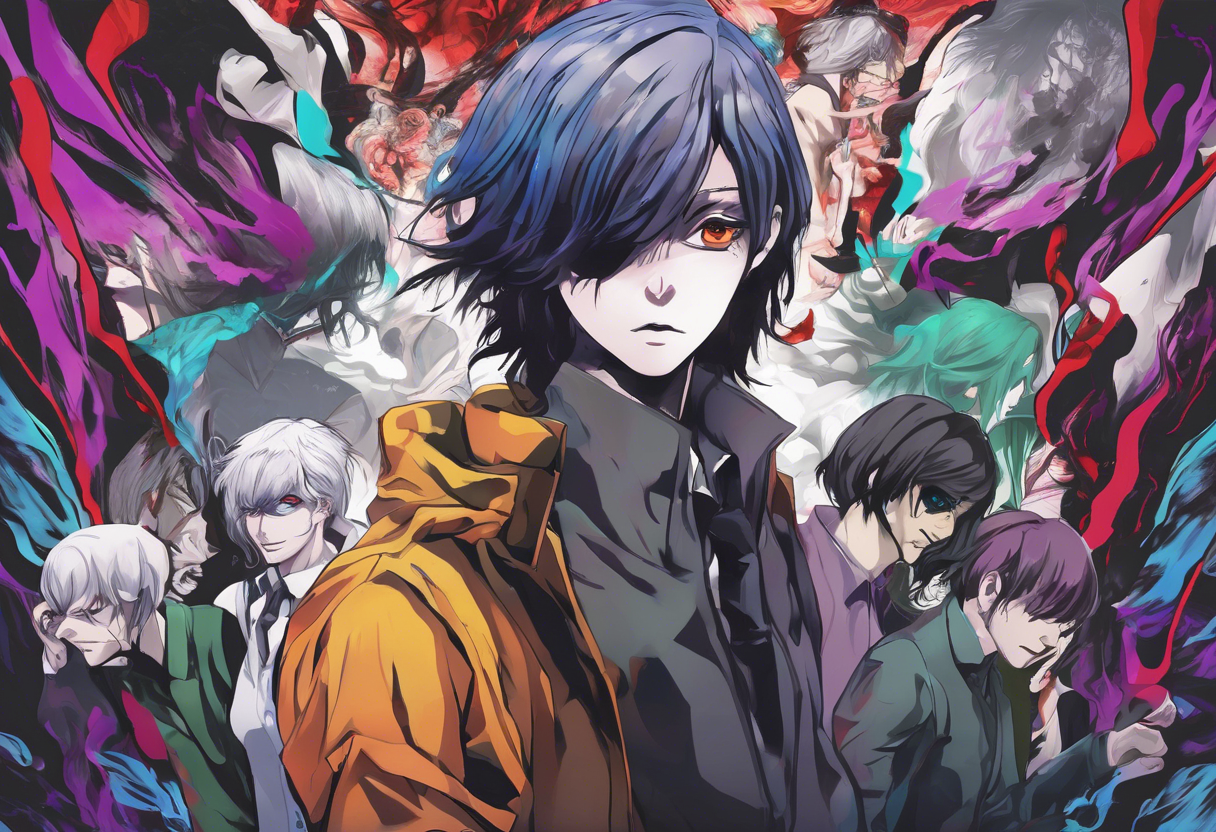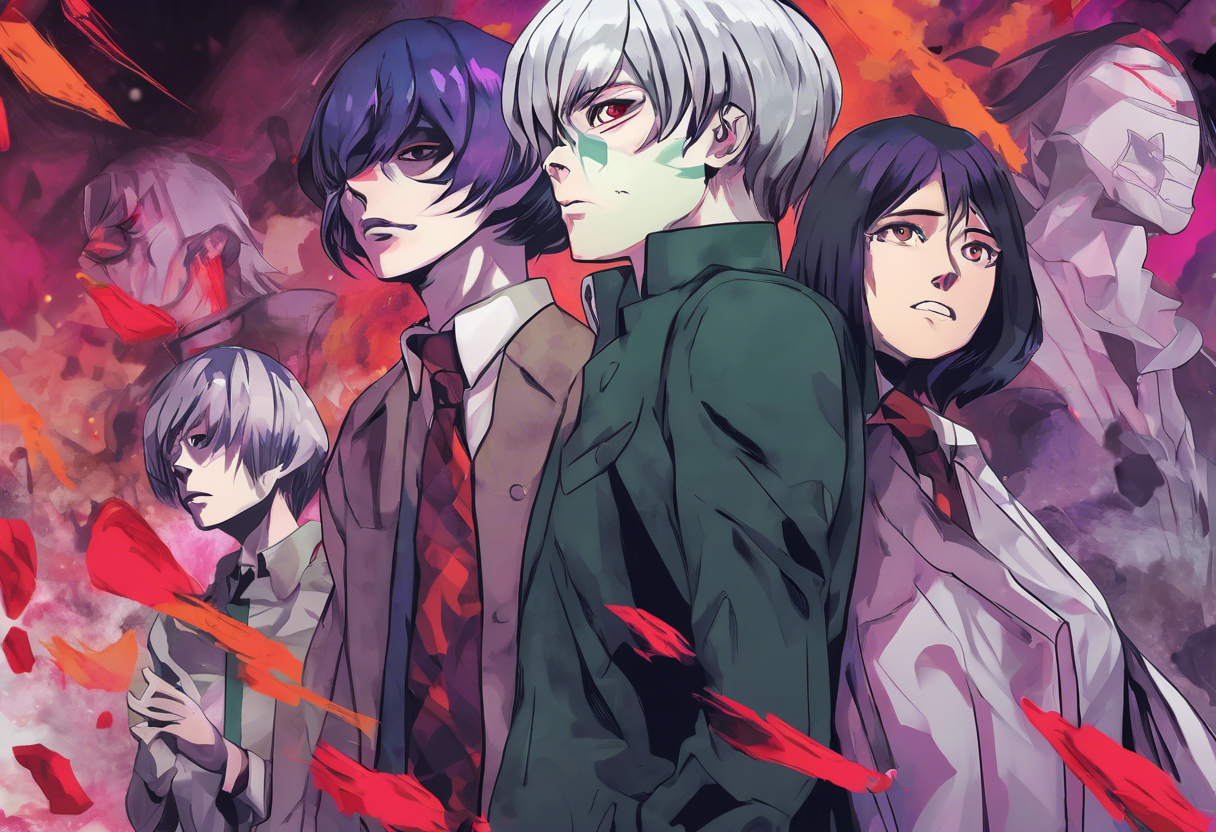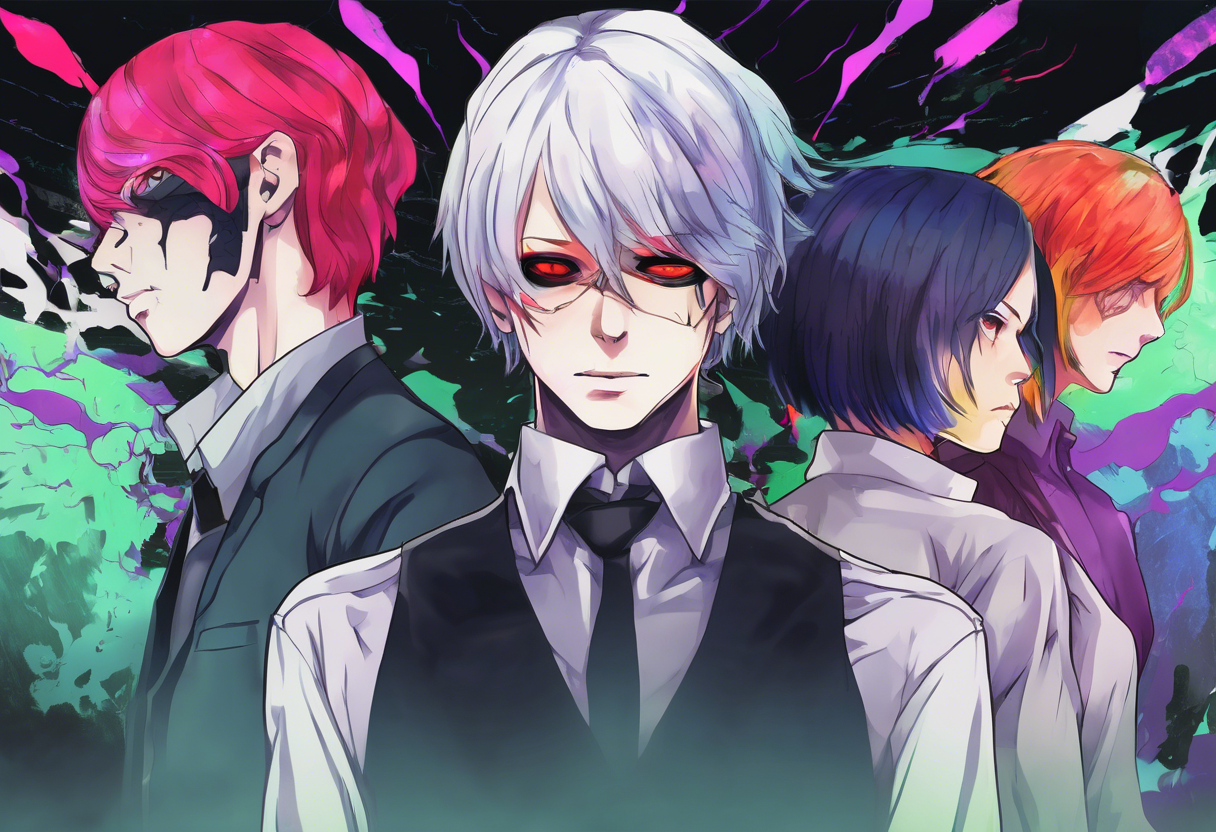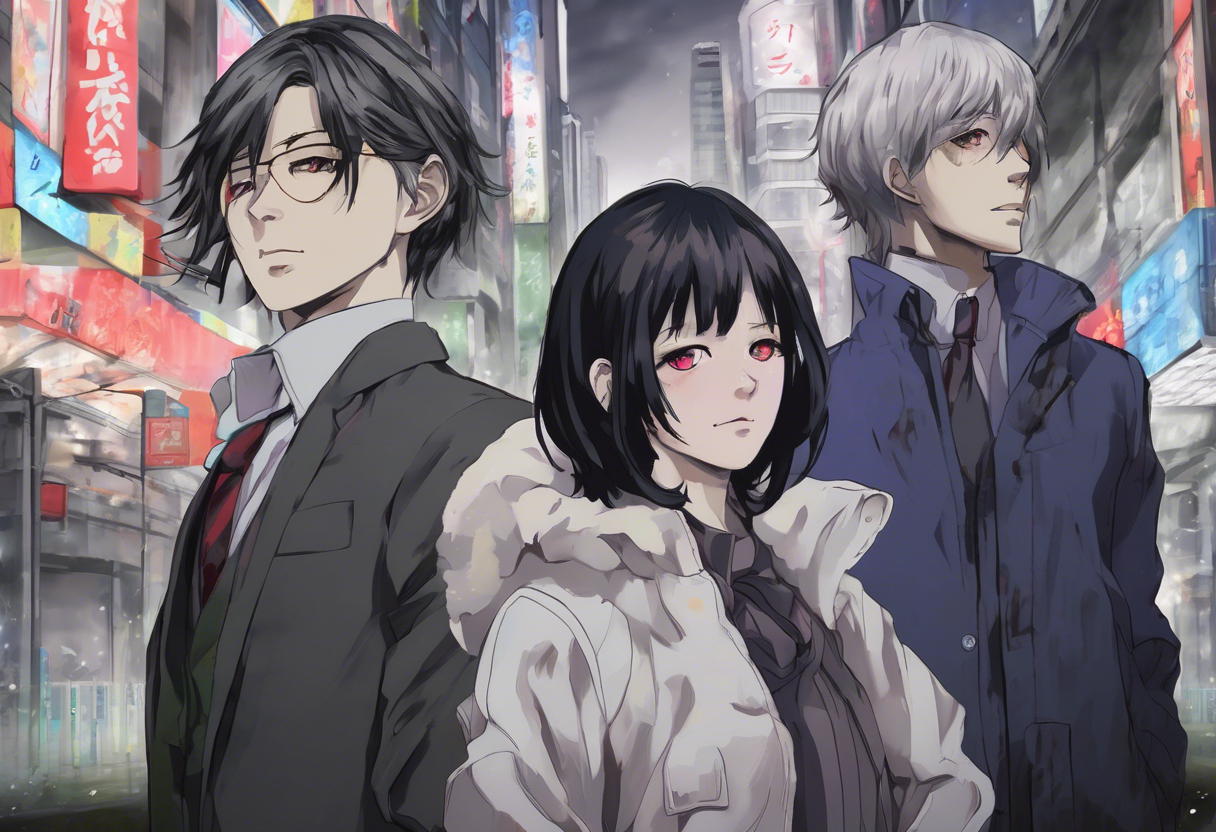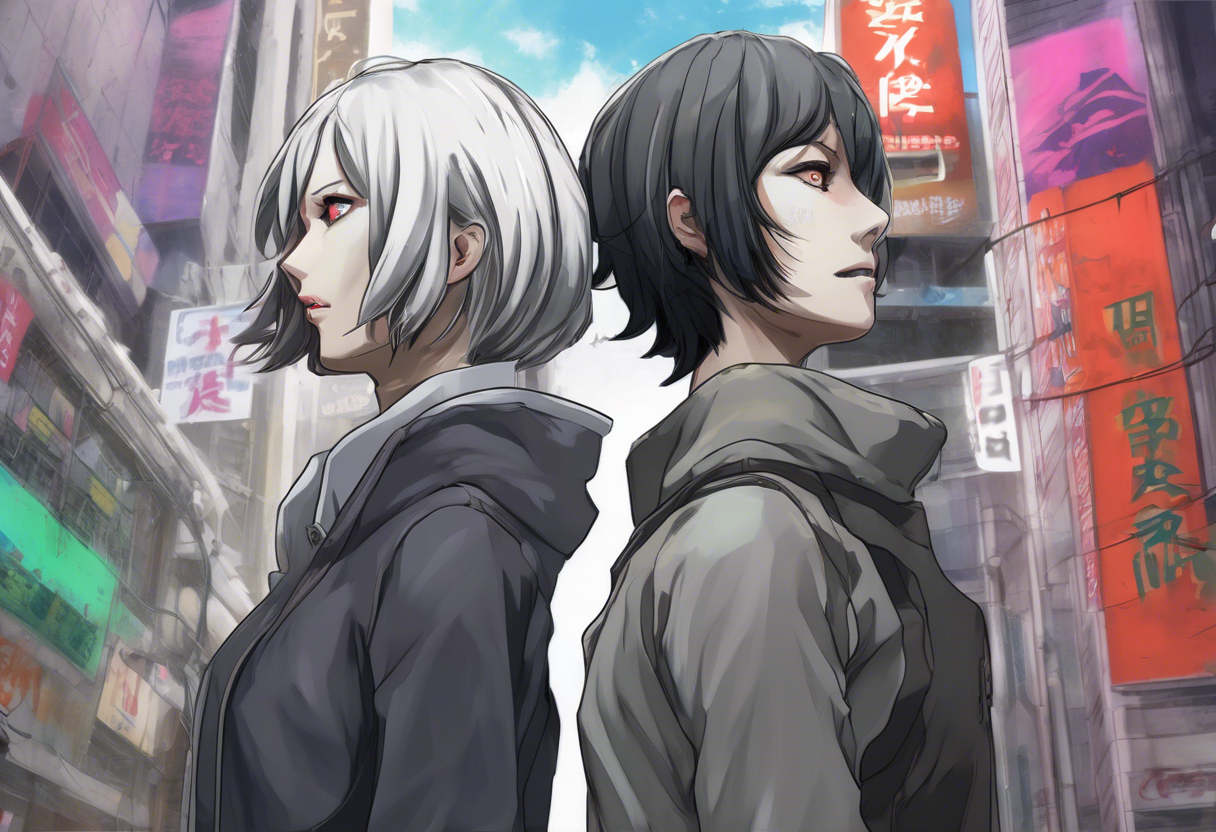Contents
Tokyo Ghoul:re – Episode 30: TURN: In the End
Introduction
Tokyo Ghoul:re – Episode 30, titled "TURN: In the End," is a pivotal installment in the anime series that continues the dark and intricate narrative of the Tokyo Ghoul franchise. This episode, directed by Masayuki Matsumoto, was first aired on May 8, 2018, and marks a significant point in the storyline of Tokyo Ghoul:re, which itself is a sequel to the original Tokyo Ghoul series.
The Tokyo Ghoul franchise, known for its blend of horror, drama, and action, delves into a world where ghouls, supernatural beings that feed on humans, coexist with humans in secret. Tokyo Ghoul:re follows the story of Ken Kaneki, now living under the identity of Haise Sasaki due to severe brain damage and subsequent amnesia, as he navigates his role within the Commission of Counter Ghoul (CCG), an organization dedicated to eradicating ghouls[3][4].
Episode 30 stands out for its intense action sequences, emotional depth, and the culmination of several narrative arcs that have been building throughout the series. The episode is part of the larger story arc that explores themes of identity, morality, and the struggle for survival in a world fraught with violence and prejudice.
Plot Summary
In "TURN: In the End," the narrative unfolds with multiple concurrent plot threads that converge in a dramatic and intense climax. The episode begins with Sasaki, still grappling with his dual identity as Ken Kaneki and Haise Sasaki, suffering from multiple hallucinations of Kaneki. These hallucinations are a manifestation of his internal conflict and the strain of his duties as a member of the CCG’s Quinx Squad.
Meanwhile, within the auction room, a fierce battle is underway. Takizawa, a formidable ghoul, is engaged in a brutal fight against Sasaki, who is forced by his superiors to confront this SS-rated one-eyed ghoul alone. The fight is marked by its ferocity and the emotional toll it takes on Sasaki, who is increasingly haunted by visions of Kaneki.
In another part of the auction house, the Nutcracker, a notorious ghoul known for her cruelty, is killed by Ginshi Shirazu and Saiko Yonebayashi of the Quinx Squad. This scene highlights the squad’s growing strength and their determination to eliminate the ghoul threat.
Big Madam, a powerful and ruthless ghoul, is at the center of another intense confrontation. She is fighting against Urie and Mutsuki, both members of the CCG. Urie, already on the brink of insanity due to his past traumas, is pushed further to the edge during this battle. Mutsuki, meanwhile, unleashes his kagune, a ghoul’s predatory organ, in a desperate bid to take down Big Madam. Despite their efforts, Big Madam proves to be a formidable opponent, and it is only when Hanbee Abara, another member of the Suzuya squad, intervenes that she is finally wounded.
The episode also delves into the complex and tragic backstory of Juzo Suzuya, who has a deeply troubled history with Big Madam. Juzo, despite being tortured and emasculated by Big Madam in the past, finds himself unable to kill her when they face off. This encounter underscores the psychological scars that many characters in the series carry and the moral ambiguities that define their actions.
As the episode progresses, the stakes escalate. The auction room becomes a battleground where multiple factions clash, each with their own agendas and motivations. The CCG’s mission to eradicate ghouls is complicated by internal conflicts and the moral dilemmas faced by its members. The ghouls, on the other hand, are fighting for survival and the right to exist in a world that fears and hates them.
The climax of the episode is marked by a series of dramatic events. Urie is critically injured and swallowed by Big Madam, a scene that highlights the brutality and desperation of the conflict. Meanwhile, Takizawa’s attack on Sasaki reaches its peak, with Sasaki’s hallucinations of Kaneki becoming more intense and disorienting. The episode ends with a sense of unresolved tension, setting the stage for the subsequent episodes and the final confrontation between the CCG and the ghouls.
Themes and Symbolism
"TURN: In the End" is rich in themes and symbolic elements that are central to the Tokyo Ghoul franchise. One of the primary themes is the struggle with identity, particularly evident in Sasaki’s internal conflict. His dual identity as Kaneki and Sasaki symbolizes the duality of human and ghoul, highlighting the blurred lines between these two worlds.
The episode also explores the theme of trauma and its lasting impact on characters. Urie’s descent into insanity and Juzo’s inability to kill Big Madam despite his past suffering illustrate the psychological scars that characters carry. These elements add depth to the narrative, making it more than just a simple battle between good and evil.
Morality is another significant theme, as characters are often forced to make difficult choices that challenge their moral compass. The CCG’s mission to eradicate ghouls raises questions about the nature of justice and whether the ends justify the means. The ghouls, on the other hand, are fighting for their right to exist, which raises questions about prejudice and acceptance.
The use of hallucinations and visions in the episode serves as a symbolic representation of the characters’ inner turmoil. Sasaki’s hallucinations of Kaneki symbolize his struggle to reconcile his past and present selves, while Urie’s near-insanity reflects the psychological toll of his experiences.
Cultural Impact
"TURN: In the End" has had a significant cultural impact, particularly within the anime community. The episode’s intense action sequences and emotional depth have made it a standout in the series, with many fans praising its execution and narrative progression.
The Tokyo Ghoul franchise as a whole has influenced popular culture, with its themes of identity, morality, and the struggle for survival resonating with audiences worldwide. The series has inspired various adaptations, including manga, novels, and even a live-action film, further cementing its place in anime history.
Critical Reception
"TURN: In the End" received positive reviews from critics and audiences upon its release. The episode was praised for its intense action, emotional depth, and the way it advanced the plot of the series. Critics noted the episode’s ability to balance multiple plot threads and character arcs, creating a cohesive and engaging narrative.
However, some critics felt that the pacing could be improved, and the episode’s reliance on previous knowledge of the series might make it challenging for new viewers to follow. Despite these minor criticisms, the episode was generally well-received, with many considering it a highlight of the Tokyo Ghoul:re series.
Legacy
"TURN: In the End" continues to be an important part of the Tokyo Ghoul franchise’s legacy. The episode’s impact on the series’ narrative and character development is significant, setting the stage for the final confrontations and resolutions.
The Tokyo Ghoul franchise as a whole has inspired a generation of anime fans and creators. Its themes of identity, morality, and survival continue to resonate, making it a staple in anime history. The series’ influence can be seen in various other anime and manga, with its dark and complex storytelling serving as a benchmark for many other works in the genre.
References
- https://en.wikipedia.org/wiki/Tokyo_Ghoul:re_(TV_series)
- https://tokyoghoul.fandom.com/wiki/Story_Arcs
- https://tokyoghoul.fandom.com/wiki/Tokyo_Ghoul:re_(anime)
- https://www.crunchyroll.com/news/guides/2024/9/2/what-is-tokyo-ghoul-about
- https://www.jacksonpbrown.com/anime-and-manga/2020/4/27/thoughts-on-tokyo-ghoulre-manga-review-spoilers

